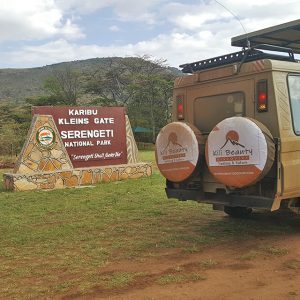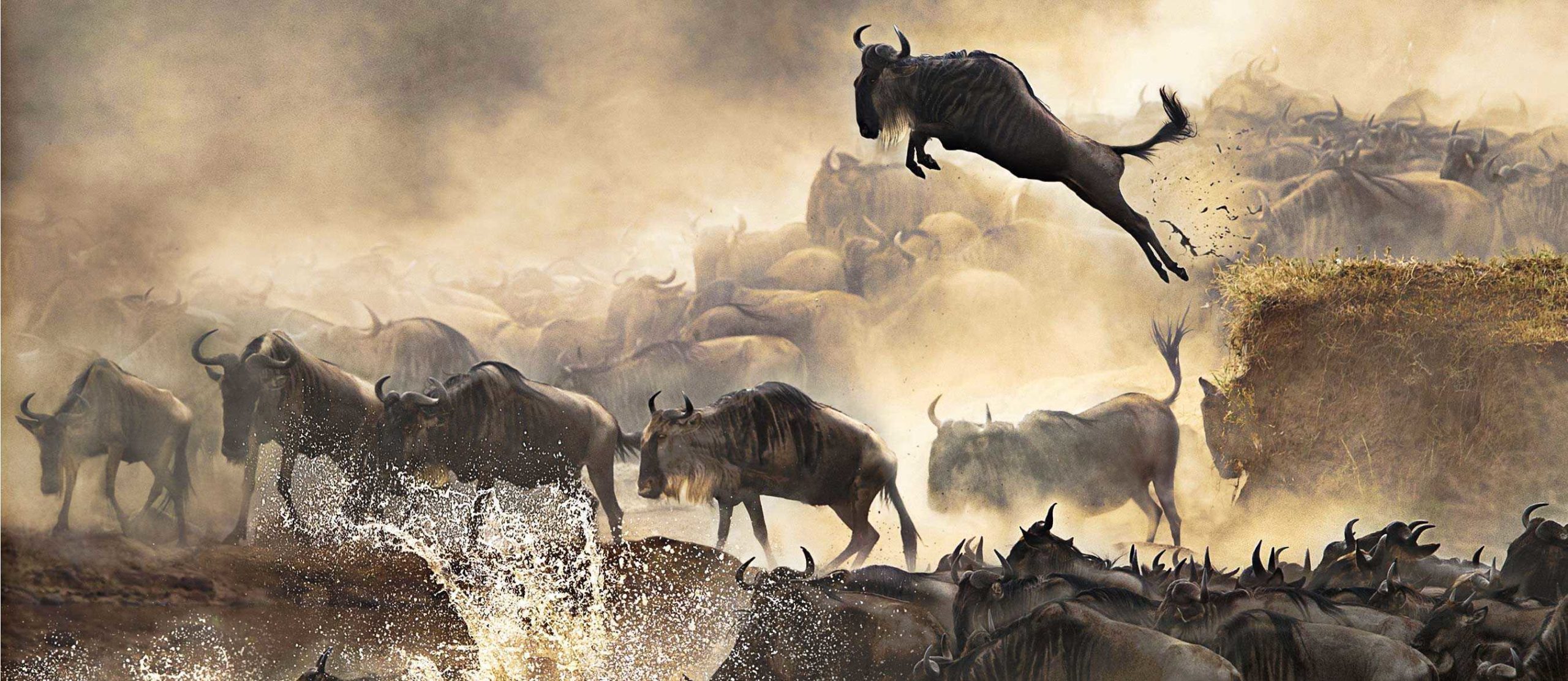What is the great migration?
The Great Migration is the name for the annual movement of over 1 million wildebeest and hundreds of thousands of zebra and gazelle during the dry season on the East African savanna. The herds move around 1200miles from the southern expanse of the Serengeti plains an Ngorongoro crater over the borders of Kenya to Maasai Mara and back down to the southern Serengeti again in search of green pasture and water. This is held as one of the Seven Wonders of the World
However, this movement of animals is not a simple trip from one point to another, instead of a simple back and forth movement between Tanzania and Kenya, the Great Migration is a repeating cycle of movement that wildebeest undergo every year in order to find food and water and rear their young during seasonal change.
The migration cycle
In January, the herds are at the southern plains of the Serengeti. In January and February, the wildebeest give birth to their young on these southern plains. The entire wildebeest herd produces over 200,000 calves within the brief period of two to three weeks. While lion and hyena are common on these southern plains, the calves are too many for the predators to prey on in their entirety. Furthermore, wildebeest calves are incredible animals that can stand after three to four minutes and be off running well with the herd at just five minutes to ten minutes old.

Wildebeest crossing the Mara River-Kenya
In March and April, the wildebeest herd moves north and west, to the central and western reaches of the Serengeti, near Lake Victoria. During the long rains season of April, the Rut occurs, when the wildebeest mate after complex territorial rituals by males. In June and July, the great crossing of the Serengeti happens in earnest. Wildebeest cross over the Grumeti River and eventually the Mara River to reach Kenya.
If you were travelling to Kenya and Tanzania in August and September, you would see the central Serengeti dry up and the entirety of the herd arrive in Maasai Mara National Reserve and the northernmost reaches of the Serengeti, past the Mara River. In October and November, the low rains begin and vegetation starts returning to the flood plain in the south. The herd starts to move back south, along the eastern fringes, only to settle in the south for birthing and the long rains of spring.
However, this traditionally-predictable routine is ever changing. Weather is never the same from one year to the next, and the effects of climate change have exacerbated the divergence from year to year. The rains of the Serengeti are becoming increasingly irregular. Some years see early downpours while others have suffered from extended drought, which upsets the natural balance of the herds.
Witnessing the Great Migration on the Serengeti plains is one of the great and unforgettable life time experiences a person can have on their East Africa vacation/holiday. Everyone who has the chance to stand up in their jeep with POP UP ROOF (as seen below) and gaze out on thousands of animals moving across the magnificent plains should take that chance. But it’s important to be aware of the current challenges facing these animals and their ecosystem, if you’re to fully cherish this natural wonder.

Jeep with pop up roof in migration safari
What is the best time of year to see migration?
Well, over one million animals migrate across one of the most robust environments on the planet in order to eat and reproduce. Lion and hyena thin out large portions of the herd while other animals simply die of exhaustion. This is the game of life and death played out on one of the planet’s most fantastic stages.
Therefore, Kenya and Tanzania don’t have the traditional Western four seasons of spring, summer, fall, and winter. Instead, the seasons are mostly divided into a wet and dry season, with mini-wet and dry seasons happening in between. June to September is the dry season, temperatures are warm and rain is infrequent. The low rains begin in late October followed by the mini-dry season, while the true wet season is April through May.
The best time to see the Great Migration is during the dry season, between July and early October. It’s warm, weather is stable, and animals are abundant. The sparse vegetation and dried-up waterways force the animals to head up north to find food and drink.
If you visit in November or December, you’ll still see wildebeest and zebra, but the movements will not be as pronounced as during July and August. Just be sure to avoid April and May if you’re hoping to catch the Migration. The animals haven’t left the southwest yet and the torrential rains flood the Serengeti and make travel difficult.
10 DAY SERENGETI WILDEBEEST MIGRATION SAFARI

Serengeti Wildebeests Migration is a display of natural wonders with over two million wildebeests, zebras, and antelope traveling over 450 miles across the plain to ensure their survival, unaware that there’s danger presented by the stalking lions and cheetahs among other predators of the wildlife
Request a Free Quote
Our small Tanzanian family is also your local guide. We all speak fluent English, have years of experience, and are an encyclopedia of knowledge about the wildlife, culture, and land.
Our local guides are the ambassadors of Tanzania and your perfect host for a trip of a lifetime
Start Planning Your Trip